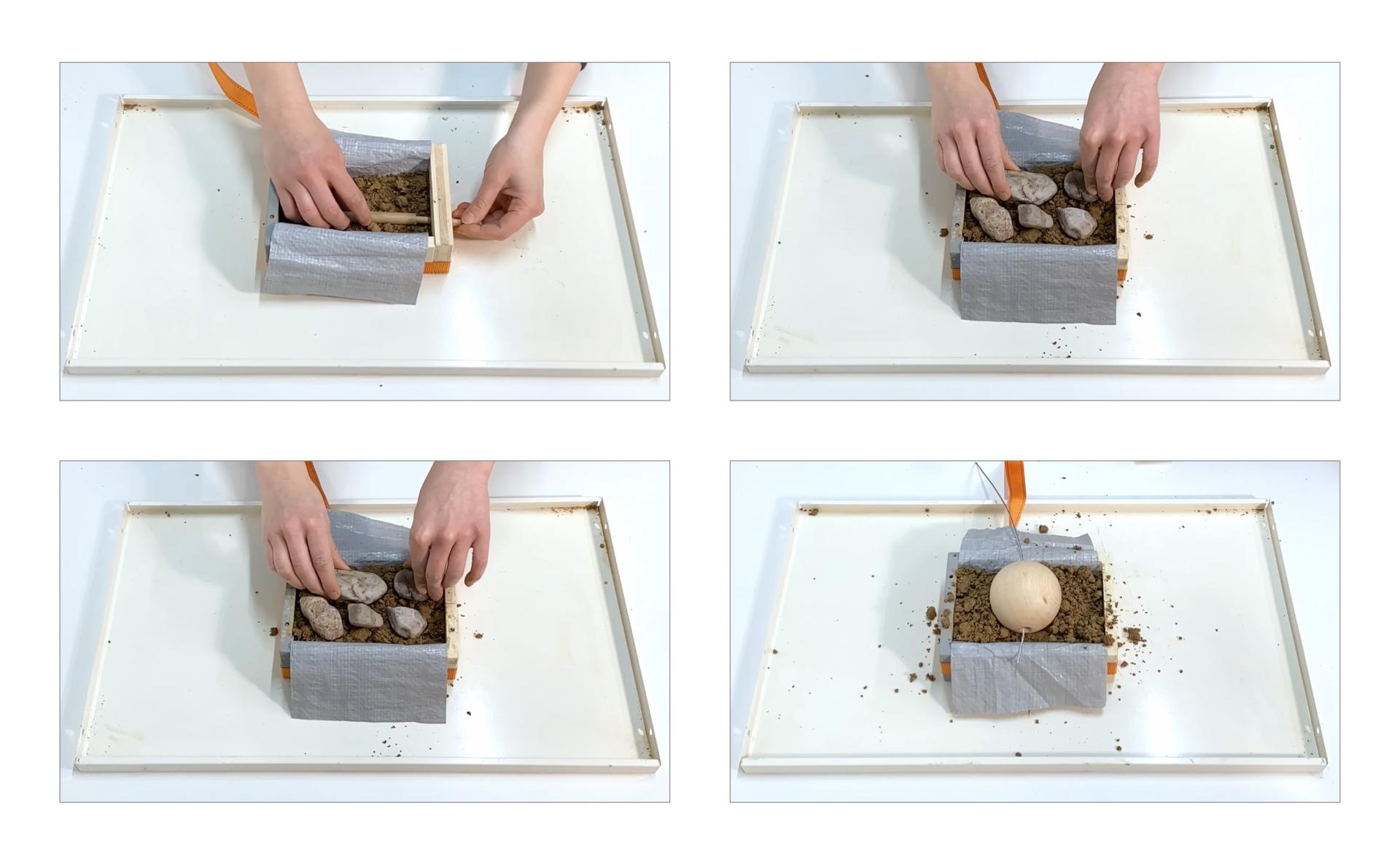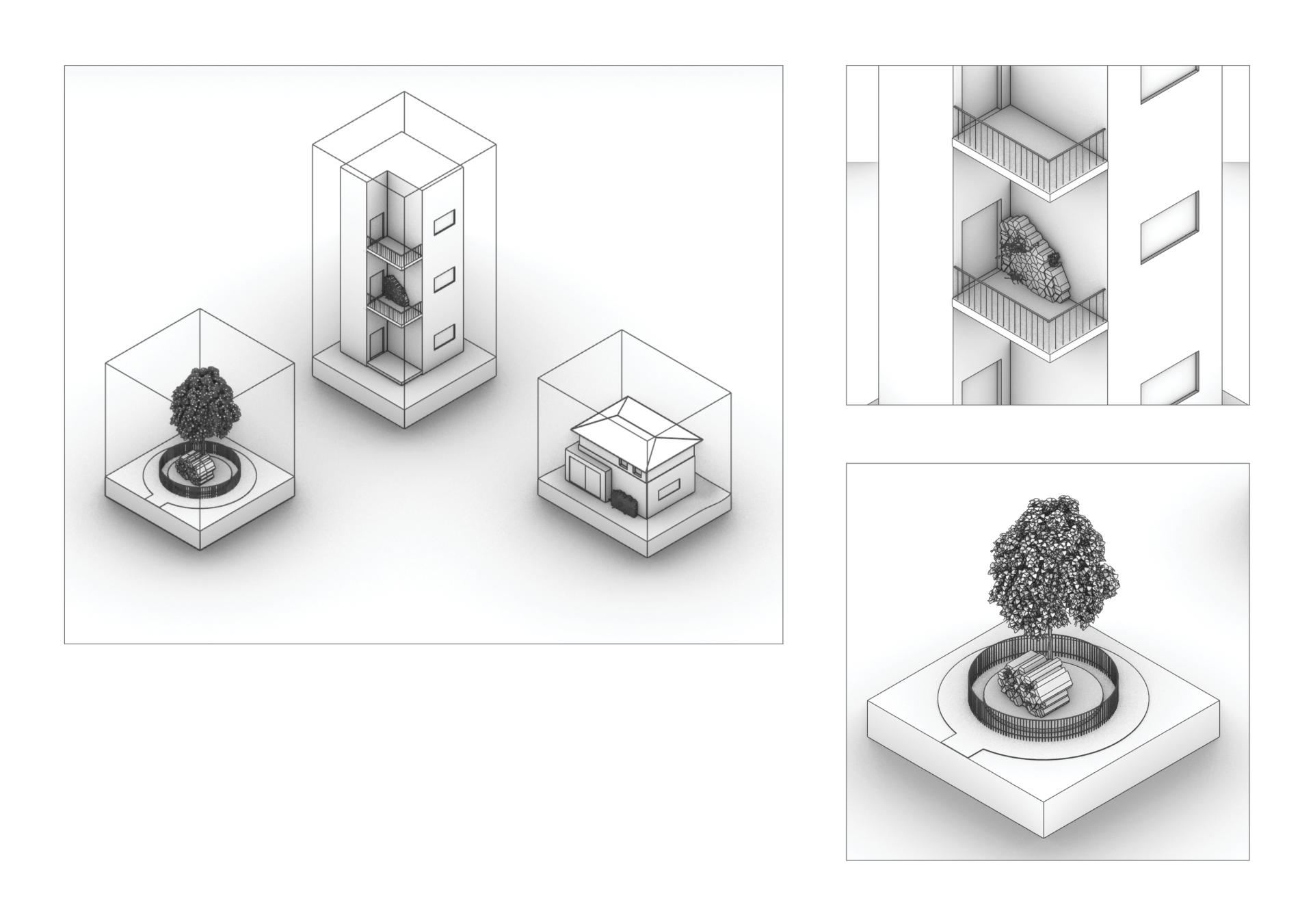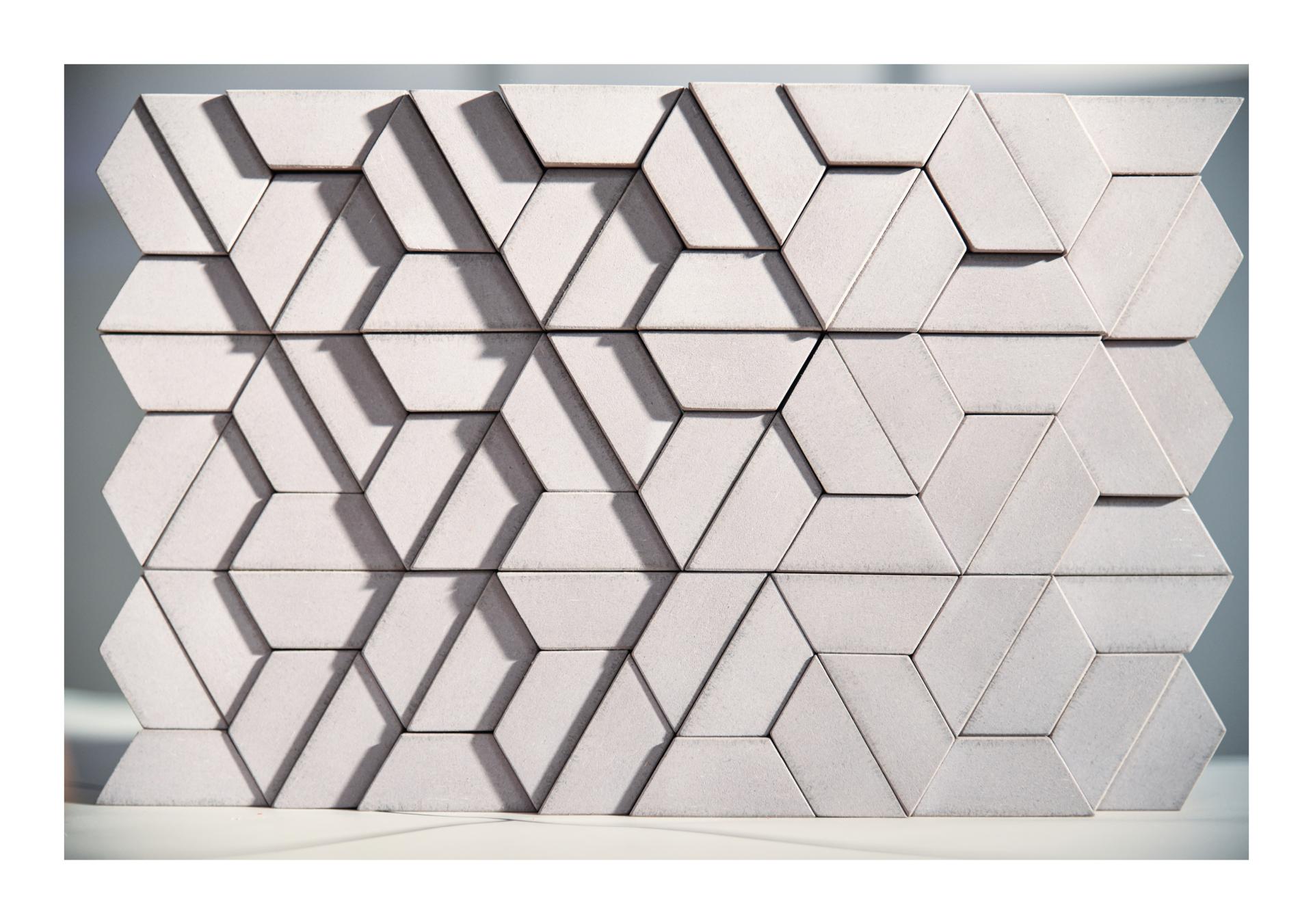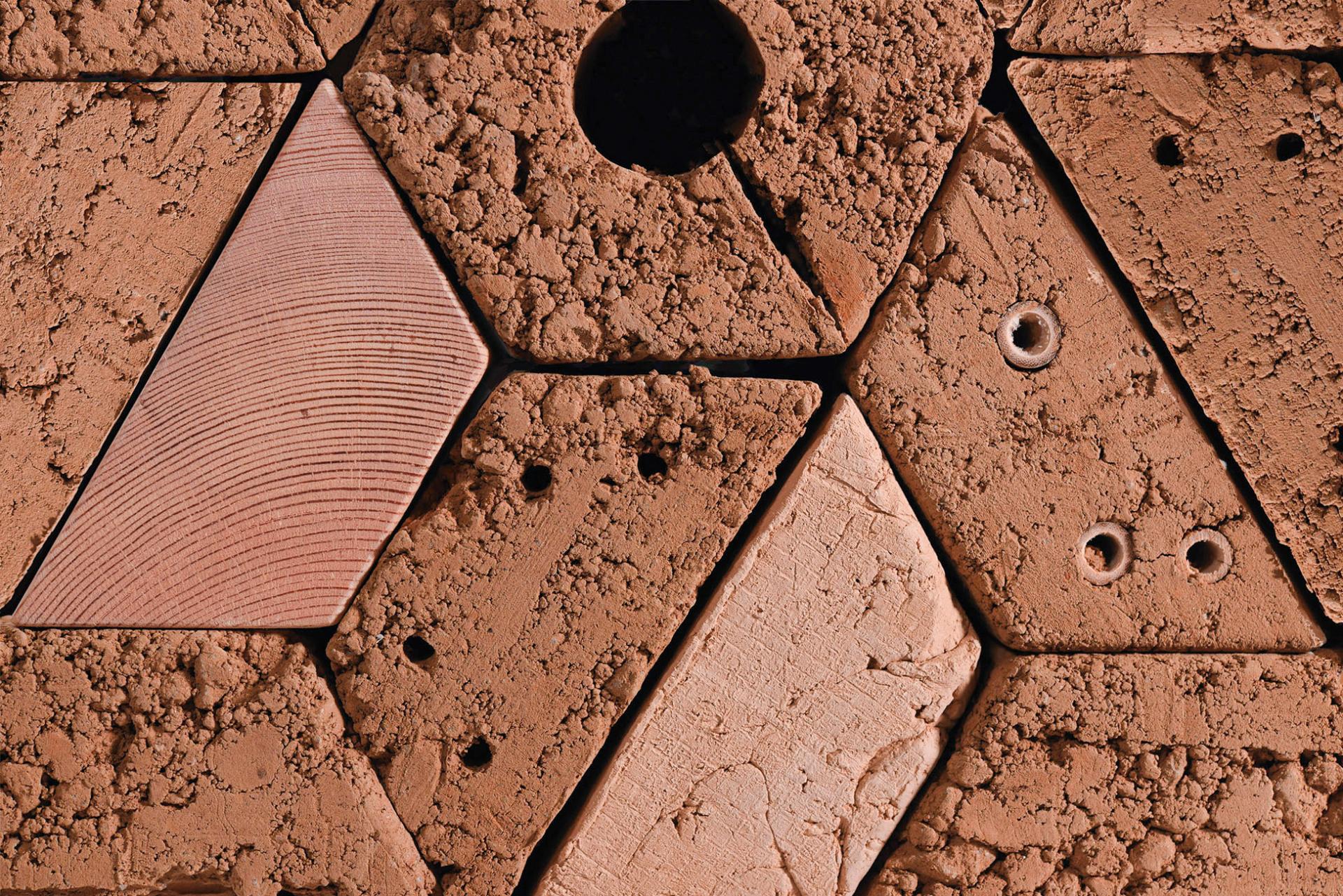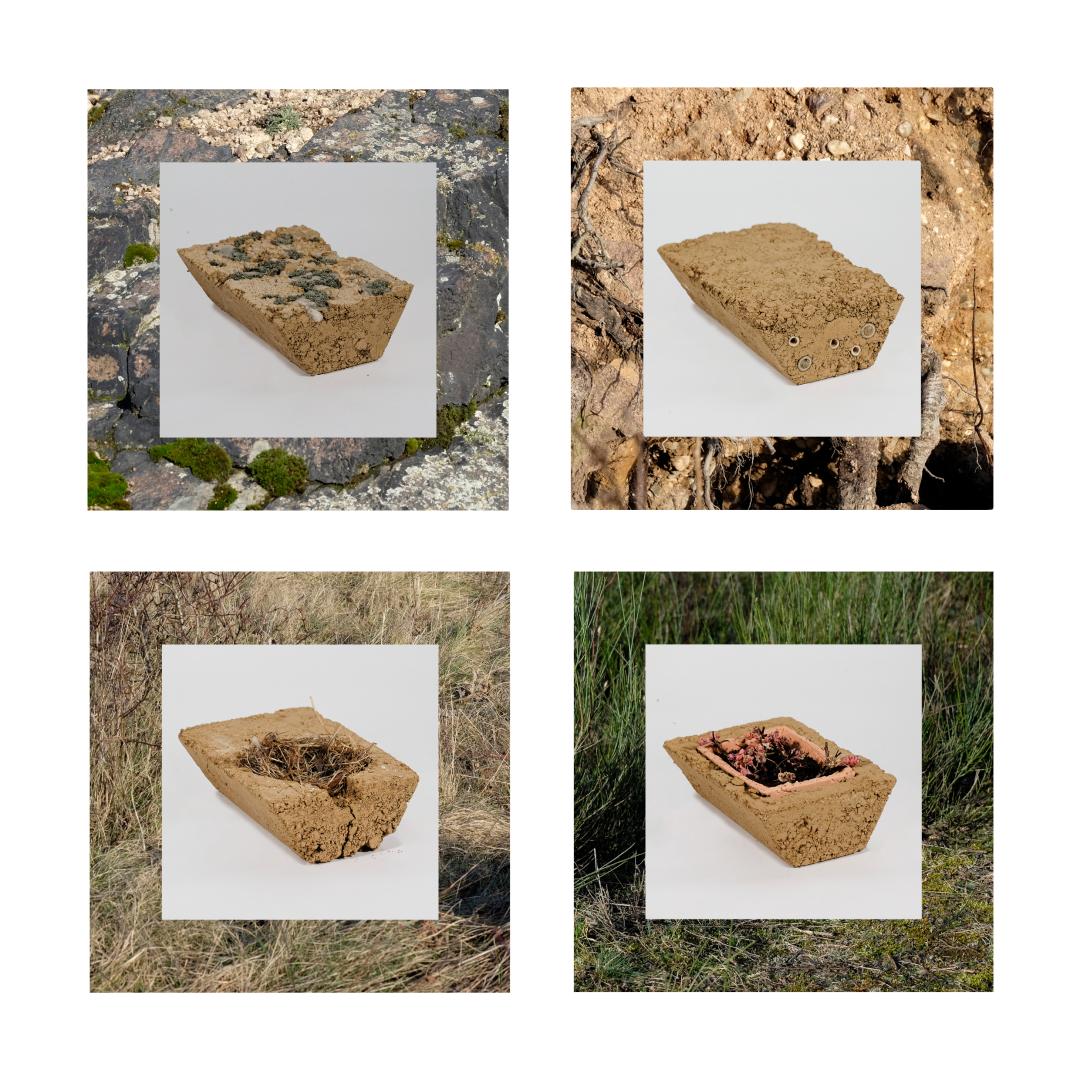The birds and the bees
Basic information
Project Title
Full project title
Category
Project Description
The vision of building green cities using circular building methods provides answers to problems we face today. As a local and recyclable resource, clay can make a big difference in the pursuit of implementing this vision. This project demonstrates how versatile the construction material is: rammed earth modules provide habitats for various species by offering hollow spaces and shaped surfaces. Placed in the right context, the bricks become the foundation for the development of small ecosystems.
Geographical Scope
Project Region
Urban or rural issues
Physical or other transformations
EU Programme or fund
Which funds
Description of the project
Summary
The birds and the bees results from my work as a resident as part of the research project prog/rammed earth. In collaboration with the SustainLab and the XLab of the BurgLabs Halle, a small research group is exploring rammed earth with the goal of broadening the scope of applications for this remarkable construction method. Rammed earth has a long history and is slowly being rediscovered in European and Western contemporary architecture, credited as one of the most sustainable ways of building an architecture. The earthy mix primarily consists of sand, silt, water and clay. As such, it is made up of resources that can be found locally in most populated areas of the world. As such, rammed earth provides a ready-at-hand alternative to concrete.
The birds and the bees proposes thinking one step ahead: the idea consists of integrating habitats into rammed earth modules, providing a building material that will eventually come to life. This project encourages us to cohabitate with other organisms by providing spaces for various species and integrating them directly into our living environment. Throughout the past months, I have consulted with experts and scientific institutions in order to investigate which species can benefit from the qualities of rammed earth, and how it may offer habitats to a range of different organisms. The design of the modules are influenced by several parameters, such as different habitat requirements, but also constructive and aesthetic considerations. As the goal is ultimately to bring the modules into the real world, shape and building process are important factors guiding the design. Applying reusable moulds and basic ramming tools, the method can be acquired easily. This allows a diverse range of groups and individuals to construct small islands of biodiversity, building relationships between humans and nature.
Key objectives for sustainability
The project is a an answer as to how we can support living organisms such as small animals, plants, fungi, protists etc. by taking counter measurements when it comes to the vanishing of suitable habits in rural as well as urban spaces. The building bricks are beneficial for multiple organisms by offering suitable habitats integrated into rammed earth bricks. A number of modules have already been developed in consultation with scientific institutes and experts on the organisms, such as the Saxony-Anhalt State Agency for Environmental Protection.
As a construction method and material compound, rammed earth is extremely interesting from an environmental perspective for several reasons. It can be repurposed in an infinite recycling loop as the basic functional principle is the compaction of earth, a reversible process. Also, clay is a globally available resource, which means that ramming earth using local resources could be applied almost anywhere. In addition, rammed earth does not need to be fired or heavily processed: it is a building material with low embodied energy and generates very little waste, especially in comparison to cement.
By combining these two aspects, I conceived living structures by integrating different forms into the building bricks, thus creating spaces where biodiversity can thrive. Another key objective on the long run however, is to shine a light on rammed earth, and by giving it visibility showing that sustainable alternatives to harmful construction methods are already at our hands. Thus, next to having a direct impact on biodiversity, the project bears the potential to bring a real change in mentality when it comes to choosing construction materials, whether on a large or small scale. Focusing on adaptability in usage, the project also challenges the paradigm of believing that we must build structures and products for eternity in order for them to be sustainable.
Key objectives for aesthetics and quality
For one, the sight of earth being rammed into a defined shape is already intriguing by itself, as at it is not a sight we are yet accustomed to. Surprisingly sharp structures and playful forms are attained by building the according moulds. Also, next to serving as a function, aggregates such as stones or stems invite the eye to explore and discover. Balancing these and combining them with different surface structures or material additions such as wood result in a richness of patterns and fulfil an ornamental function. Also, this effect is underpinned by how the blocks are positioned in a specific context. The proposed stacking scenarios (as seen in the annexe) have been conceived using a parametric CAD-modeling tool, allowing to choose from a variety of positioning options.
Finding the right shape has played an important role during this project, as the aesthetic impression of each structure plays a significant role when it comes to increasing the readiness of the public or an individual to integrate the proposal into their everyday life. An important part of the overall aesthetic impression results from stacking and arranging the modules. From front view, the modules are a tessellation, from a perspective point of view, the depth placement of the modules vary and create a dynamic spatiality, captivating to the eye.
The shape of the module is convincing through its simplicity: the geometrical considerations allows it to be stacked in a variety of patterns. Also, the structures are able to vary in size. Finally, the visual quality does not only lay within the conceived shapes, but in the hollow spaces, which nature transforms into living spaces. With time, the structure is appealing not only because of the layout of modules, but because of a small ecosystem that has evolved around it. Observing this play offered by nature results in being more conscious of the richness of species we are surrounded by.
Key objectives for inclusion
Equal opportunities & accessibility:
With a reusable mould and simple tools, the earth can be rammed by anyone who is able to carry out the movement of compaction, the physical effort being comparable to chopping wood with a light axe. When working in a team, more or less physically demanding parts of the manual labour can be distributed considering each group member’s individual situation. The technique is a simple, hands-on process and can be learned within half an hour. As the structures are modular, they can be built and positioned in rural areas, but may also be constructed and placed in less spacious areas, such as a balcony or a small urban green space. In another scenario, structures can be placed in public spaces, creating small islands of biodiversity in densely populated cities.
Public participation & co-design:
As environmental impacts and interventions are a shared concern, a large variety of people with different backgrounds have reason to meet and make a collaborative effort in preserving biodiversity. People taking part in the construction of said structures are learning new skills and can experience a sense of self-efficacy, but may also connect to the group. Building habitats by ramming earth represents a means of communication and a tool for getting in touch with ecologic thematics, also for those who may have less access to specific thematics on a daily basis.
I am currently planning a workshop with a fellow designer and plan to make an intelligible documentation of potential interventions to allow this initiative to be reproduced beyond national boarders on a DIY basis.
Citizen engagement & transdisciplinary team work:
As I have noted during my design process, the project bears a high potential for people from different disciplines to come together. It may be individuals from the building sector, policy makers, scientists, architects, artists, activists, young adults and citizens who will create common ground.
Physical or other transformations
Innovative character
As an example, I would like to outline a project I am currently organising with a design partner from France. Answering the open call “Prends ta planète en main 2022” put forward by the French German Youth Office (FGYO), we have received a grant enabling us to organise an exchange between two groups of young adults from Germany and France. The groups will meet this summer, one week in France, and one week in Germany, with the common goal to construct one or several structures made of rammed earth modules. The workshops will introduce this young audience to the thematics and principles around sustainability, design processes, creative conception, local architecture and building methods.
This initiative emphasizes the three aspects sustainability – beauty – inclusion: the project represents a dedicated moment where a young audience can discover a new culture and build relationships with foreign fellows. It is also a space to learn about biodiversity, sustainability and train critical thinking concerning our choices of materials used in contemporary architecture and design. It empowers a group by learning new skills and building confidence around creating something that is aesthetic as well as impactful by hand. Apart from affecting the young individuals, the initiative results in conceiving a structure where biodiversity can thrive. As the rammed earth structure will preferably be placed in a public context, citizens may enjoy, discover and get in touch with the same topics.

